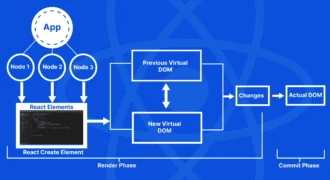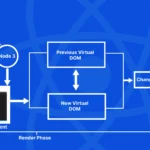Visual Realism and the World of High-Quality Renderings
Pursuing visual realism has long been a driving force in digital art and design. From the early days of computer graphics to today’s sophisticated rendering technologies, artists and designers continually strive to create indistinguishable images from reality. High-quality renderings are pivotal in achieving this goal, offering a glimpse into real and imagined worlds with stunning clarity and detail.
The Evolution of Visual Realism
The concept of visual realism dates back centuries, with artists throughout history striving to capture the world around them with ever-increasing accuracy. From the masterful paintings of the Renaissance to the hyper-realistic portraits of the modern era, artists have continuously pushed the boundaries of what is possible in visual representation.
With the advent of computers, a new frontier of realism opened up. Early computer graphics were crude by today’s standards, but they represented a significant leap forward in the quest for lifelike imagery. As computing power increased and graphics technology advanced, so did the level of realism that could be achieved.
High-quality renderings accurately simulate light, texture, and material properties. As a result, they have become indispensable tools for designers and artists, from architectural visualizations to digital art and entertainment.
The Science of Architectural Rendering
At its core, rendering is the process of generating an image from a three-dimensional model. This process involves simulating light’s behaviour as it interacts with objects in the scene, considering factors such as reflection, refraction, and scattering.
Achieving high-quality renderings requires a deep understanding of the principles of light and optics and advanced algorithms for simulating these phenomena. Modern rendering engines employ various techniques, including ray tracing, path tracing, and global illumination, to create images that are visually indistinguishable from reality for upcoming construction projects.
Rendering involves simulating light and accurately representing materials and textures. From the rough surface of a brick wall to the glossy sheen of polished metal, every material uniquely interacts with light. Capturing these subtle nuances is essential for creating convincing renderings.
Applications in Design and Visualization
The applications of high-quality renderings are virtually limitless, spanning a wide range of industries and disciplines. In 3d industrial rendering, architecture and interior design, these creations are used to create lifelike visualizations of buildings and spaces before they are constructed. This allows designers to experiment with different layouts, materials, and lighting conditions, ensuring that the final product meets their vision.
In product design and manufacturing, renderings create photorealistic prototypes of everything from automobiles to consumer electronics. These virtual prototypes can be easily modified and iterated, speeding up the design process and reducing the need for physical prototypes.
In the entertainment industry, high-quality renderings create immersive worlds for film, television, and video games. From sprawling landscapes to intricate character designs, these renderings help bring fictional worlds to life with stunning detail and realism.
Challenges and Limitations
Despite the remarkable progress made in rendering, there are still significant challenges and limitations to overcome. One of the biggest challenges is the computational cost of producing high-quality renderings. Architectural 3d rendering services often require hours or even days of computation time to achieve realistic results, making it time-consuming for architects.
Another challenge is the so-called “uncanny valley” effect, wherein images that are almost, but not quite, indistinguishable from reality can elicit feelings of unease or discomfort in viewers. Avoiding this effect requires careful attention to detail and understanding human perception.
Furthermore, the quest for visual realism can sometimes lead to ethical dilemmas, particularly in digital manipulation and synthetic media. As technologies for creating photorealistic images advance, the line between reality and fiction becomes increasingly blurred, raising questions about the authenticity of the pictures we see.
The Role of Creativity in Architectural Visual Realism
While technology is crucial in achieving visual realism, creativity remains at the heart of the process. Architects must understand the technical aspects of rendering and possess a keen eye for composition, colour, and comfort.
When creating visualizations of photorealistic buildings through architectural 3D rendering services, experts draw on their creativity to imbue their work with meaning for their clients. In high-quality renderings, technical prowess must be balanced with artistic vision to create compelling buildings.
The Future of Visual Realism
Despite these challenges, visual realism’s future looks brighter than ever. Advances in hardware acceleration, machine learning, and real-time rendering promise to make high-quality renderings more accessible and efficient.
In the coming years, we can expect to see even greater levels of realism in digital imagery, with renderings virtually indistinguishable from photographs. These advancements will open up new possibilities for architects, artists, and designers, allowing them to create virtual 3d tours, worlds and previously unimaginable experiences.
Conclusion
Visual realism has long been a driving force in digital art and design. From the early days of computer graphics to today’s sophisticated rendering technologies, artists and designers have continually pushed the boundaries of what is possible in visual representation.
High-quality renderings are pivotal in achieving this goal, offering a glimpse into real and imagined worlds with stunning clarity and detail. As technology advances, we can expect to see even greater levels of realism in digital imagery, opening up new possibilities for creativity and expression.

















